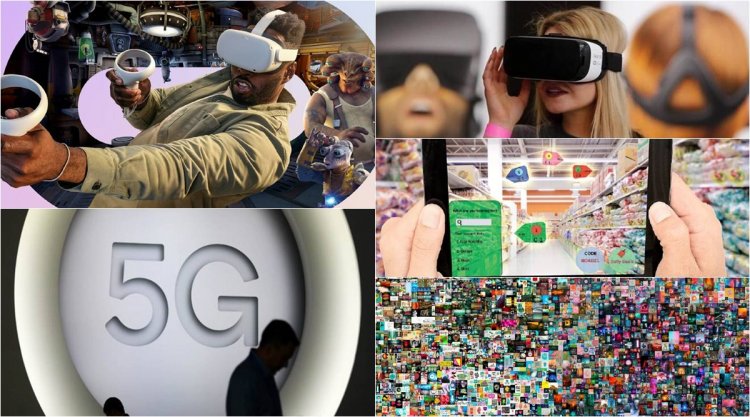The A-list: From Metaverse to NFT, top tech buzzwords of 2021
In 2021, several tech concepts created a buzz. Here’s a look!

2021 tech buzzwords: Technology is one aspect that is continuously evolving, and is also leading to the evolution of other sectors and industries. For the past two years, while the coronavirus pandemic has led to many sectors either slowing down or standing still, technological innovations have been rife. During 2021 also, there were several concepts that created a buzz among people, some of them being new concepts while some that have been around for years.
Let’s take a look at the top buzzwords of 2021 in tech!
5G
A technology that has been in talks for a long time and is now under testing in India, but it is still among the biggest tech buzzwords across the globe. As the world is going through a digital revolution, faster internet speeds are a must. With 3G, browsing the internet on phones became easier, with 4G, video streaming and OTT platforms became the norm. Similarly, 5G is expected to make more things, possibly like AR and VR, easier and more commonplace. With 5G connection, it could also mean that fibre-based connections might become redundant to some extent, because with faster speeds available wirelessly, users are likely to prefer fibre or cable-based connections since they require users to be in a particular location to be connected.
Metaverse
As Facebook changed its name to Meta, Metaverse became a raging buzzword globally. Metaverse refers to a virtual world or a virtual environment. Kind of like a simulation game (think, SIMS), but closer in looks to the actual world, and instead of just one person controlling multiple characters in a game, it is actually a space where multiple people give themselves animated avatars and interact with each other.
Lockdown and the pandemic has already made people interact with each other virtually via video conferences et al, but Metaverse takes it to a different level where people actually recreate the physical world where they were to interact, say an office, and then instead of meeting each other physically, their avatars meet virtually and they interact with each other. In 2003, one such virtual world was already created, called Second Life, and while it was widely popular, the concept of Metaverse had not quite caught up by then.
NFT
NFTs took the world by a storm this year, as it became increasingly popular as 2021 progressed. NFTs refer to non-fungible tokens or digital authenticity certificates that are attached to digital assets like art, videos or music. As FE Online had earlier explained, non-fungible objects are those which do not have a standard value, but instead have a unique value like a vintage car or rare paintings. When such objects are combined with digital ledger platform called blockchain, it leads to NFTs. The ownership of digital assets are confirmed and certified by NFTs since such details are recorded on blockchain – and these records remain public and stored on the internet. Due to this, owners are much less likely to lose the NFTs or proofs of ownership.
Internet of Things (IoT)
Internet of Things or IoT refers to a system where smart computing devices, mechanical or digital machines and objects, animals or people are interconnected, with each having unique IDs. In this scenario, people are included in this in terms of say a person who has been fitted with a heart monitor implant, and animals refer to situations where they might have, say, a biochip transponder.
These systems are capable of transmitting data with each other over the internet without there being any need for a human-to-human interaction or a human-to-computer interaction.
In an IoT ecosystem, the smart devices, which are web-enabled, interact with each other and act according to the data they collect from the environment and from each other. They are capable of working with minimal human interaction, but humans can interact with them, like to set them up or to give them instructions.
Augmented Reality and Virtual Reality (AR and VR)
Though these concepts have been around for some time, they are still creating buzz year after year as they are the next generation technological innovation. These terms cover technology where devices like glasses or headsets are used to alter the reality of the user by projecting an imagery generated by the computer directly into the field of vision of the user. There can be two aspects to that. One can be where an object or an aspect is superimposed into the view that the user is seeing in the real world. This is known as augmented reality, where the real world is being augmented to include computer-generated imagery.
Meanwhile, the second aspect can be where a user is placed in a completely virtual world, as their senses are completely cut off from the real world. This is known as virtual realty.
These are the upcoming trends that are gathering pace and could grow leaps and bounds over the next year.







